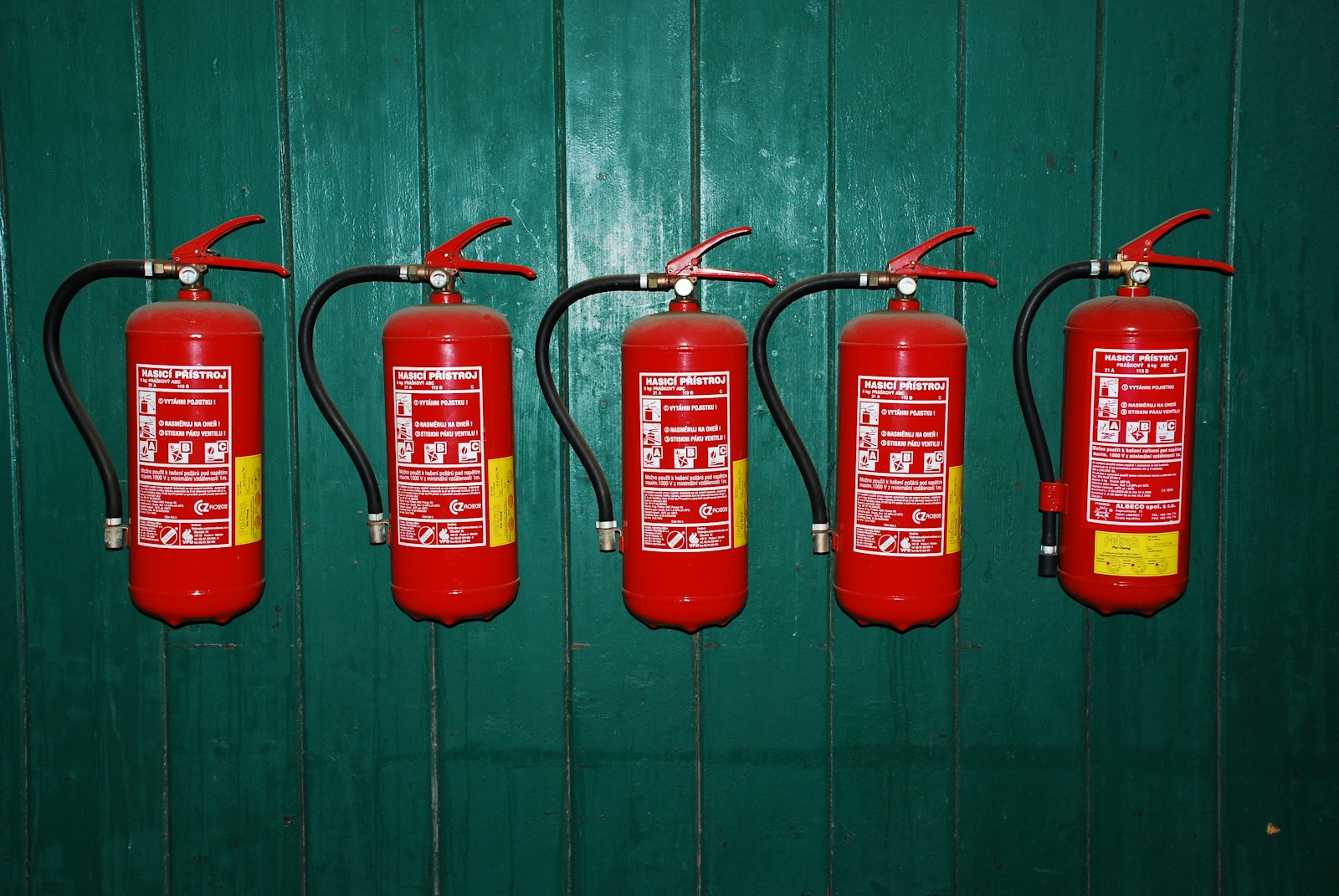Fire inspections are critical for identifying and mitigating risks that could lead to fires in residential, commercial, and industrial properties. These inspections are conducted to ensure that buildings comply with fire safety codes and that fire protection systems are working effectively. While fire inspections generally cover a wide range of safety measures, there are often overlooked items that can pose significant risks. Property owners, managers, and tenants may not always be aware of these overlooked areas, which is why it’s essential to address them proactively. This essay highlights some of the most commonly overlooked items during fire inspections and explains why they should be given careful attention.
1. Clutter and Blocked Exit Routes
One of the most commonly overlooked items during a fire inspection is the condition of exit routes. In many properties, hallways, stairwells, and emergency exits are cluttered with boxes, furniture, or equipment. Blocked exits are a severe fire risk, as they can prevent people from safely evacuating during a fire. This is especially concerning in multi-story buildings or areas with large numbers of occupants.
Inspectors may often overlook or fail to fully emphasize the importance of clear exit routes. However, building codes typically mandate that exit pathways must be free from obstructions to ensure that evacuation can take place without delay. Items like cardboard boxes, trash, or even snow blocking outdoor exits can impede escape routes, especially in an emergency when panic may take hold.
It is crucial to maintain unobstructed and clearly marked exit routes, ensuring that they are well-lit and easily accessible. Regular fire inspections should check that exit doors open easily, and that emergency lighting and signs are in place, visible, and functioning.
2. Improper Storage of Flammable Materials
Another commonly overlooked risk during fire inspections is the improper storage of flammable materials. Many businesses or residential properties store chemicals, cleaning agents, and other flammable substances inappropriately, often in areas too close to heat sources or in poorly ventilated spaces. These materials can ignite easily if exposed to sparks, open flames, or high temperatures.
Fire inspectors may not always focus on storage conditions, especially in spaces that are not immediately visible, such as basements, storage rooms, or attics. Flammable liquids, gases, and even common household items like aerosol cans can present significant fire hazards if they are not stored according to fire safety guidelines.
To avoid these risks, property owners should ensure that hazardous materials are stored in proper containers and in designated areas away from potential ignition sources. Fire inspectors should check that flammable items are kept in well-ventilated areas, away from electrical equipment or appliances, and clearly labeled with safety warnings.
3. Neglected Electrical Systems
Electrical issues are a leading cause of fires, and they are often overlooked during fire inspections. Faulty wiring, overloaded circuits, damaged power cords, and improperly maintained electrical equipment are significant fire risks. However, electrical systems may not always receive the full attention they require during a fire inspection, especially when inspectors focus more on visible safety features like fire extinguishers or smoke detectors.
Overloaded circuits and the improper use of extension cords can create sparks or overheating that could trigger a fire. Similarly, damaged or frayed wires may go unnoticed if they are hidden behind walls or furniture. In addition, old or outdated electrical systems may not meet modern safety codes, making them prone to failure or sparks.
Property owners should regularly inspect electrical systems and ensure that all wiring is up to code. Inspectors should look for signs of electrical wear, including scorch marks around outlets, flickering lights, or unusual smells, all of which can indicate potential fire risks.
4. Smoke and Carbon Monoxide Detectors
While most people are familiar with the importance of smoke detectors, they are sometimes neglected during fire inspections. A building may have smoke alarms installed, but they may not be functioning properly, or they may be outdated. The batteries may have been removed or forgotten, and alarms may be obstructed by dust, cobwebs, or debris.
Another critical element that is often overlooked is the presence of carbon monoxide (CO) detectors. Carbon monoxide is an odorless, colorless gas that can cause severe harm or death when present in high concentrations, especially in buildings with gas-burning appliances. CO detectors are not always prioritized in fire safety checks, yet they are just as essential for occupant safety as smoke detectors.
Inspectors should test smoke and carbon monoxide detectors during inspections to ensure they are operational and free from obstructions. Batteries should be replaced regularly, and detectors should be tested monthly to confirm that they can detect smoke or carbon monoxide. Additionally, property owners should replace outdated detectors, as older models may not meet modern safety standards.
5. Fire Doors and Fireproofing Materials
Fire doors and fire-resistant materials are often overlooked during fire inspections, despite their importance in preventing the spread of fire. Fire doors are designed to contain flames, smoke, and heat within a specific area, allowing occupants more time to evacuate safely and limiting damage to the building. However, fire doors can easily be propped open, improperly maintained, or damaged over time.
Inspectors may fail to check whether fire doors close tightly and automatically, or whether their seals are intact. Additionally, fireproofing materials, such as fire-resistant paint or insulation, may deteriorate over time, losing their ability to protect critical structural elements of the building.
It is essential to ensure that fire doors are not blocked or wedged open, as this compromises their effectiveness. Fire-resistant walls, doors, and ceilings should be inspected for damage or wear, and any fireproofing materials should be replaced if they are no longer effective.
6. Heating Systems and Space Heaters
Heating systems and space heaters are common sources of fire risks, but they are often overlooked in fire inspections. Many people use space heaters in areas without adequate ventilation, or they may leave them running unattended, which increases the likelihood of a fire. Central heating systems can also pose risks if they are poorly maintained, with clogged filters or outdated equipment that could malfunction and overheat.
Fire inspectors may not always thoroughly inspect these systems, particularly if they are located in hard-to-reach areas like attics or basements. Regular inspections of heating systems are critical to ensure that they are operating safely and efficiently.
Property owners should keep space heaters away from flammable objects, such as curtains or bedding, and ensure that they are plugged directly into wall outlets (rather than using extension cords). Heating systems should be serviced regularly to ensure they are functioning safely and that any potential fire risks are identified and addressed.
7. Lack of Staff or Tenant Training
A crucial aspect of fire safety that is often overlooked during fire inspections is the training and preparedness of building occupants. Fire drills and emergency evacuation procedures are often not conducted regularly enough, or they are poorly executed. Inspectors may not always evaluate how well staff or tenants are trained to respond in the event of a fire, which can compromise the effectiveness of the fire safety measures in place.
It is important to ensure that building occupants are familiar with the building’s fire evacuation plan, know where fire extinguishers are located, and are aware of the proper procedures to follow in case of a fire. Regular fire drills should be conducted, and emergency contact information should be clearly posted throughout the building.
Fire inspections are vital for identifying and addressing potential fire risks, but certain items are often overlooked during the process. Cluttered exit routes, improperly stored flammable materials, neglected electrical systems, and malfunctioning fire safety equipment are just a few of the common risks that may go unnoticed. It is crucial for property owners, managers, and fire inspectors to pay close attention to these overlooked items, as they can significantly impact fire safety. Regular fire inspections, combined with proactive maintenance and occupant training, will help ensure that properties remain safe and compliant with fire safety regulations, ultimately reducing the risk of fire-related accidents and improving overall safety.



